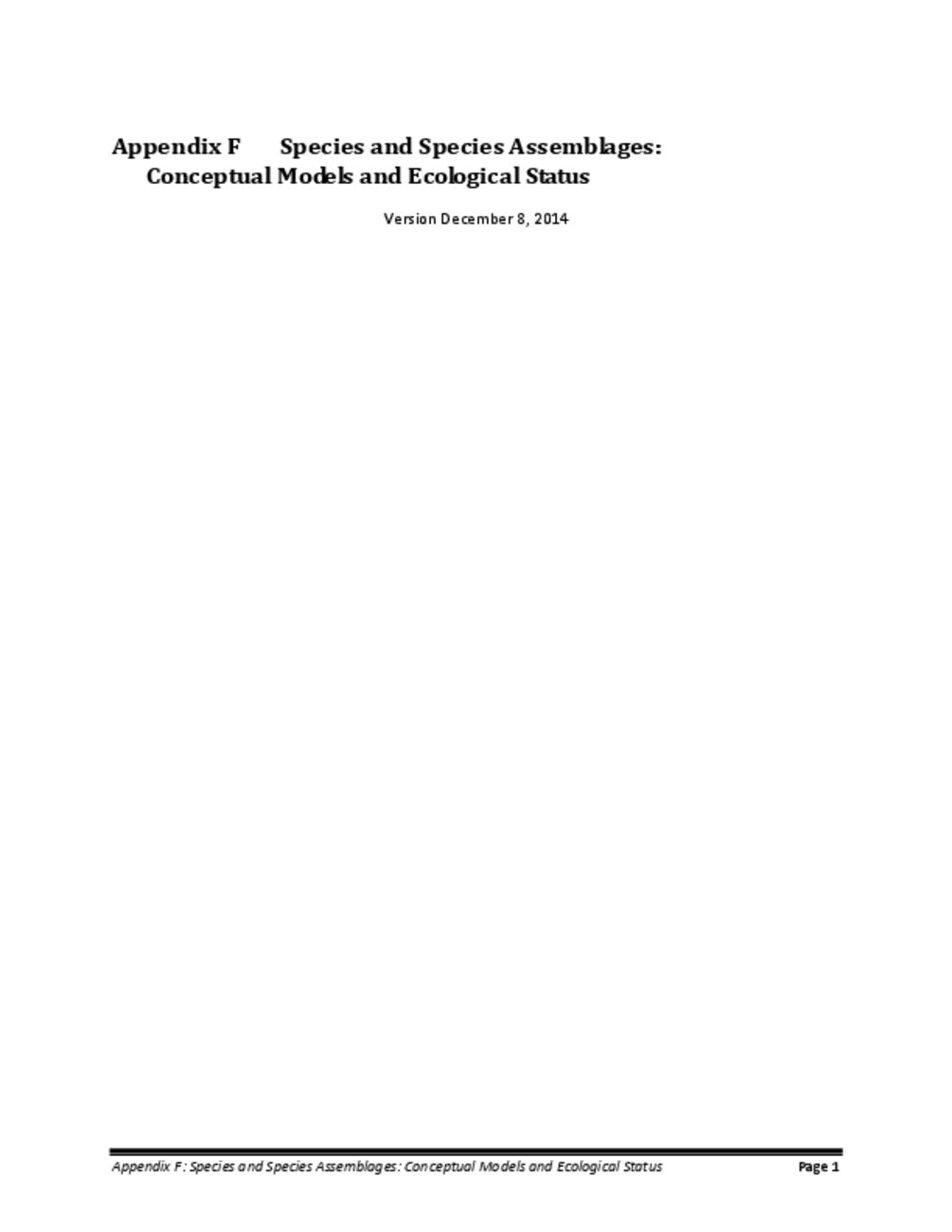Appendix F - Species and Species Assemblages: Conceptual Models and Ecological Status
Overview of Appendix
This appendix contains the conceptual models and ecological status assessment results for the species selected as conservation elements (CEs) for the Madrean Archipelago REA. Appendix A describes the methods for selection of the CEs and the change agents (CAs), as well as the collection and organization of management questions (MQs) of interest to many partners active in this ecoregion. Appendices B and C contain the assessment methods used to assess status for all of the CEs: B contains the methodological approaches to the geospatial assessments, while C contains the technical GIS documentation. Other appendices contain the conceptual models and ecological status assessment results for the terrestrial CEs (Appendix D) and aquatic CEs (Appendix E). Three additional appendix volumes contain the ecoregional conceptual model and methods / results for the ecological integrity assessment (Appendix G); the conceptual models, methods and results for assessment of Mesquite Expansion: Restoration Opportunities (Appendix H); and the climate changes methods and results (Appendix I).
The content of this appendix is organized into the following major sections:
- The Overview of Appendix F explains the content of the appendix to help the reader navigate the content, including a summary of how the CE conceptual models are organized, what material is provided in each one, and how the results of the assessment are organized for each CE.
- The second section, Distribution Mapping Methods, provides a brief summary of methods used to map the distributions of the species and species assemblage CEs; detailed technical documentation of these methods is provided in Appendix C.
- The third section, Status Assessment Methods, provides a brief summary of the status assessment methods that are specific to the CEs in this appendix; readers should reference Appendix B for complete details on the scientific rationale and technical approach to the status assessments.
- The fourth section, Species and Species Assemblages: Conceptual Models and Ecological Status, contains the conceptual models and assessment results for each CE and is the primary focus of this appendix.
- References for this appendix as a whole are at the very end of the document. (References for each individual CE are at the end of each of the CE sections under Species and Species Assemblages: Conceptual Models and Ecological Status.)
To help visually organize the content for readers, headings are not numbered for the sections containing the background or supporting or overview information. In addition, headings for the broader categorizations of the CEs (e.g., Mammals, Reptiles, etc.), are similarly not numbered. Sections containing the individual CE assessment content – conceptual models, status assessment results, and other CE-specific information – have outline-numbered headings (e.g., F-1, F-1.1, F-1.2, etc.).

